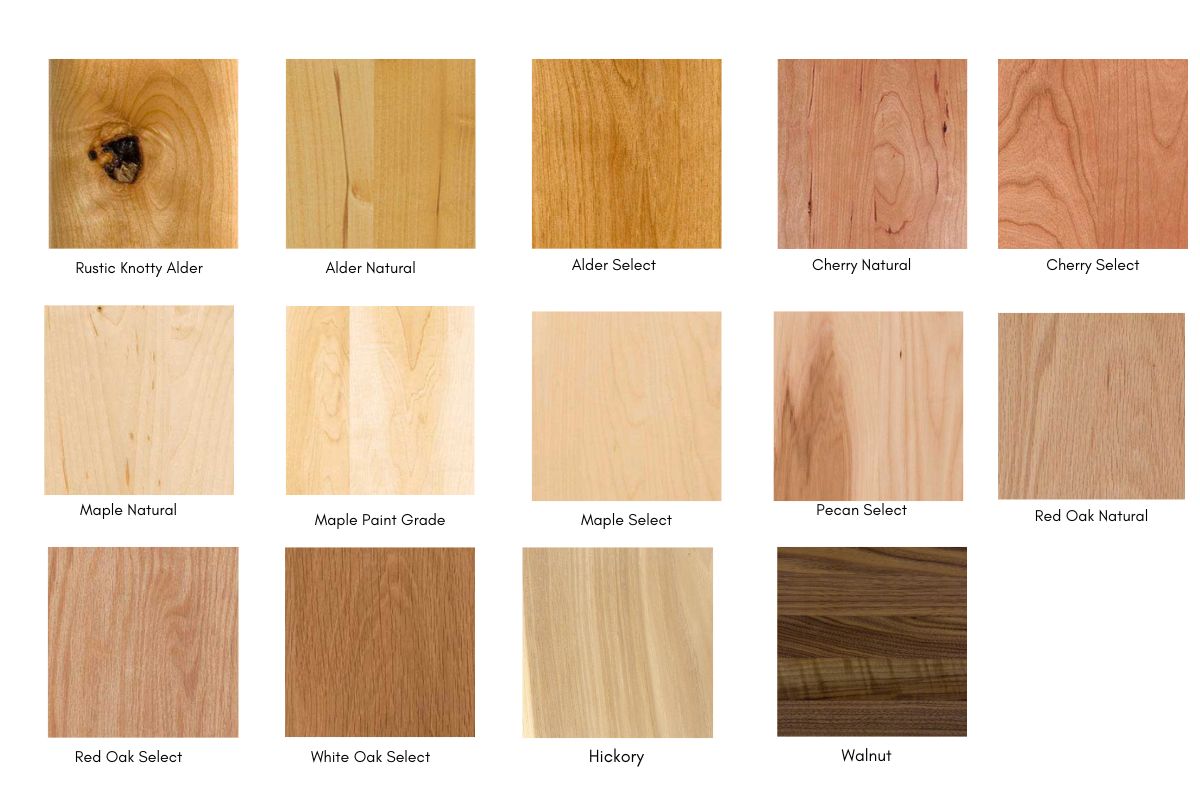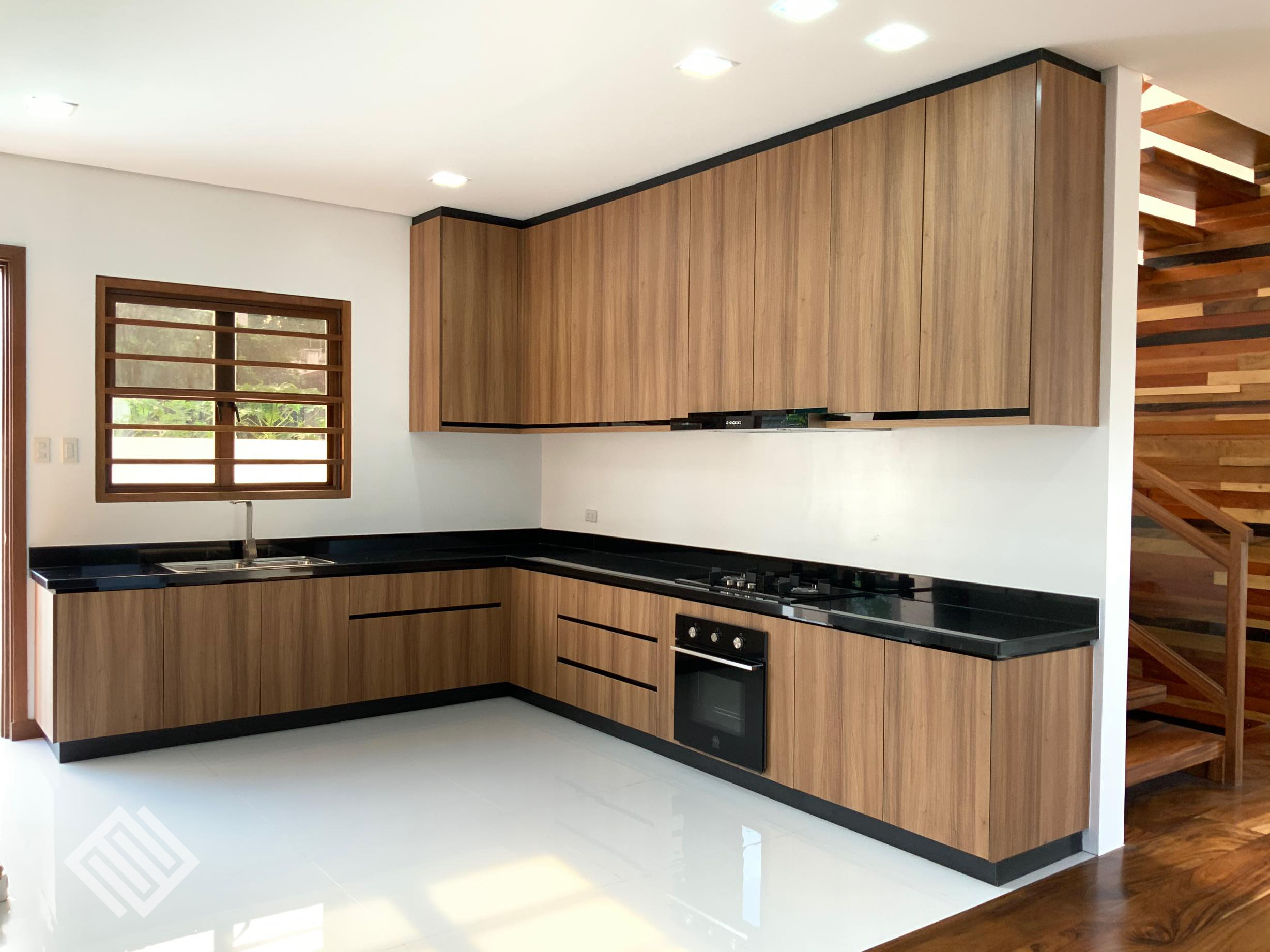Popular Kitchen Cabinet Materials in the Philippines

Kitchen cabinets are an essential part of any home, serving as both storage and a design element that can significantly impact the overall aesthetic of your kitchen. Choosing the right materials for your kitchen cabinets is crucial, as it will influence their durability, cost, and appearance. In the Philippines, several popular materials are commonly used for kitchen cabinets, each offering unique advantages and disadvantages.
Wood
Wood is a timeless and classic material for kitchen cabinets, prized for its natural beauty, durability, and warmth. It’s a versatile material that can be stained or painted to match any desired aesthetic.
- Advantages:
- Durability: Wood is known for its strength and resilience, making it a long-lasting option for kitchen cabinets.
- Aesthetics: The natural grain patterns and variations in wood offer a unique and elegant look that can enhance the overall design of your kitchen.
- Versatility: Wood can be stained, painted, or left natural, allowing for a wide range of design possibilities.
- Repairable: Unlike some other materials, minor scratches or dents in wood can be easily repaired.
- Disadvantages:
- Cost: Wood is generally more expensive than other materials like plywood or MDF.
- Maintenance: Wood requires regular maintenance, including cleaning, polishing, and sealing to prevent damage and maintain its appearance.
- Susceptibility to Moisture: Wood is susceptible to moisture damage, making it crucial to use moisture-resistant wood types or apply protective coatings.
Examples of popular wood species used for kitchen cabinets in the Philippines include narra, mahogany, and acacia. These woods are known for their durability, attractive grain patterns, and natural resistance to moisture.
Plywood
Plywood is a cost-effective alternative to solid wood, offering a good balance of durability, affordability, and aesthetic appeal. It is made by layering thin sheets of wood veneer, which are glued together with alternating grain directions.
- Advantages:
- Durability: Plywood is strong and stable, making it suitable for kitchen cabinets that need to withstand daily use.
- Cost-effectiveness: Plywood is generally more affordable than solid wood, making it a popular choice for budget-conscious homeowners.
- Stability: The layered construction of plywood makes it less prone to warping or twisting than solid wood.
- Disadvantages:
- Aesthetics: Plywood doesn’t have the same natural beauty as solid wood, but it can be stained or painted to achieve a desired look.
- Susceptibility to Moisture: Some types of plywood are not as moisture-resistant as solid wood, making it important to choose a moisture-resistant grade for kitchen cabinets.
Popular plywood options for kitchen cabinets include marine plywood, which is known for its durability and resistance to moisture.
MDF
Medium-density fiberboard (MDF) is an engineered wood product made from wood fibers that are bonded together with resin. It is a dense and smooth material that is often used for kitchen cabinets due to its affordability and ease of fabrication.
- Advantages:
- Cost-effectiveness: MDF is one of the most affordable materials for kitchen cabinets.
- Smooth Surface: MDF has a smooth and consistent surface that makes it easy to paint or laminate.
- Versatility: MDF can be shaped and molded into various designs, making it suitable for intricate cabinet designs.
- Disadvantages:
- Durability: MDF is less durable than wood or plywood and can be prone to chipping or scratching.
- Moisture Sensitivity: MDF is highly susceptible to moisture damage, making it unsuitable for areas with high humidity.
- Limited Refinishing: MDF is difficult to refinish, so any damage or scratches will be noticeable.
MDF is often used for cabinet doors and drawer fronts, where a smooth surface is desired.
Laminate
Laminate is a durable and affordable material that is often used for kitchen cabinet surfaces. It consists of layers of paper impregnated with resin and bonded together under heat and pressure.
- Advantages:
- Durability: Laminate is resistant to scratches, stains, and heat, making it a practical choice for kitchen cabinets.
- Cost-effectiveness: Laminate is a relatively inexpensive material compared to wood or plywood.
- Wide Variety of Designs: Laminate is available in a wide range of colors, patterns, and finishes, allowing for a variety of design options.
- Easy Maintenance: Laminate is easy to clean and maintain, requiring only a damp cloth for cleaning.
- Disadvantages:
- Aesthetics: Laminate doesn’t have the same natural beauty as wood, and some designs can look artificial.
- Limited Repair Options: Damage to laminate surfaces can be difficult to repair, and replacing a damaged panel is often the best option.
Laminate is commonly used for cabinet doors, drawer fronts, and countertops, where durability and ease of maintenance are important considerations.
Factors to Consider When Choosing Kitchen Cabinet Materials

Selecting the right kitchen cabinet material is a crucial decision, as it significantly impacts the functionality, aesthetics, and longevity of your kitchen. A well-informed choice ensures your cabinets are both beautiful and practical, meeting your needs for years to come.
Budget, Kitchen cabinet materials philippines
The cost of kitchen cabinets varies greatly depending on the material used. Understanding your budget is essential before exploring different options.
- Lower Budget: Consider materials like particleboard or melamine, which are affordable but may not be as durable as other options.
- Mid-Range Budget: Plywood offers a good balance of durability and affordability, while engineered wood like MDF (Medium-Density Fiberboard) provides a smooth surface for painting or laminating.
- Higher Budget: Solid wood, such as oak, maple, or cherry, offers premium quality, durability, and a timeless aesthetic. These materials are often more expensive but can be refinished and last for generations.
Kitchen Style
Your kitchen’s style plays a significant role in material selection.
- Modern Kitchen: Sleek and minimalist designs often feature materials like high-gloss laminates, acrylics, or stainless steel.
- Traditional Kitchen: Classic styles are well-suited to solid wood cabinets with intricate details, such as raised panel doors or carved accents.
- Rustic Kitchen: Reclaimed wood, distressed finishes, and natural textures create a warm and inviting atmosphere in rustic kitchens.
Durability
Kitchen cabinets experience daily wear and tear, so choosing durable materials is essential.
- Moisture Resistance: The Philippines’ humid climate necessitates materials that can withstand moisture and prevent warping or damage. Plywood, engineered wood, and certain types of solid wood with proper finishing are good options.
- Scratch Resistance: Consider materials with a protective coating or finish that can resist scratches from everyday use. Laminates, acrylics, and certain types of wood with polyurethane finishes offer good scratch resistance.
- Heat Resistance: For areas near stoves or ovens, choose materials that can withstand high temperatures. Stainless steel, ceramic, and some types of engineered wood with heat-resistant finishes are suitable choices.
Personal Preferences
Ultimately, the final decision should align with your personal taste and lifestyle.
- Color and Finish: Consider the overall color scheme and desired aesthetic of your kitchen when choosing cabinet materials. Solid wood offers a wide range of finishes, while laminates and engineered wood come in various colors and textures.
- Maintenance Requirements: Some materials require more maintenance than others. Solid wood cabinets may need regular refinishing, while laminates and engineered wood generally require less upkeep.
- Sustainability: Consider the environmental impact of your choices. Choose materials from sustainable sources or opt for recycled or reclaimed wood options.
Climate and Humidity
The Philippines’ tropical climate presents unique challenges for kitchen cabinet materials.
High humidity can cause warping, swelling, and damage to materials that are not properly treated or finished.
- Moisture-Resistant Finishes: Choose materials with moisture-resistant finishes, such as polyurethane or epoxy, to protect them from humidity.
- Proper Ventilation: Ensure adequate ventilation in your kitchen to reduce moisture buildup. This helps prevent warping and damage to cabinets.
- Material Selection: Opt for materials that are naturally resistant to moisture, such as plywood, engineered wood, or certain types of solid wood with proper treatment.
Quality and Sustainability
Assessing the quality and sustainability of cabinet materials is crucial for long-term satisfaction.
- Construction: Examine the construction of the cabinets, including the thickness of the material, the quality of the joints, and the hardware used. Well-constructed cabinets will last longer and provide better functionality.
- Certifications: Look for certifications that indicate sustainable sourcing and responsible manufacturing practices. For example, the Forest Stewardship Council (FSC) certification ensures that wood comes from responsibly managed forests.
- Reputation: Choose reputable manufacturers and suppliers who prioritize quality and sustainability in their products and processes.
Trends in Kitchen Cabinet Materials: Kitchen Cabinet Materials Philippines

The Philippine kitchen design landscape is constantly evolving, with homeowners seeking innovative and stylish solutions. This has led to a surge in popularity for various kitchen cabinet materials, each offering unique advantages in terms of aesthetics, durability, and sustainability.
Reclaimed Wood
Reclaimed wood, sourced from salvaged materials like old buildings and furniture, is gaining traction in Philippine kitchens. This eco-friendly choice offers a unique rustic charm and adds a touch of history to the space.
- Environmental Benefits: Using reclaimed wood reduces the demand for newly harvested timber, minimizing deforestation and promoting sustainable practices.
- Unique Character: Each piece of reclaimed wood boasts its own distinct grain patterns, knots, and imperfections, adding character and warmth to the kitchen.
- Versatility: Reclaimed wood can be used for cabinet doors, countertops, and even backsplashes, creating a cohesive and natural look.
Metal Accents
Metal accents, such as stainless steel, brass, and copper, are adding a modern and industrial touch to Philippine kitchens. These materials offer a sleek and sophisticated aesthetic while providing durability and longevity.
- Sleek and Modern: Metal accents create a clean and minimalist look, complementing contemporary kitchen designs.
- Durability: Metals are known for their resistance to scratches, dents, and heat, making them ideal for high-traffic areas like kitchens.
- Variety of Finishes: Metal accents can be finished in various ways, from polished to brushed, offering a wide range of aesthetic choices.
Innovative Finishes
Innovative finishes, like high-gloss laminates, textured surfaces, and metallic paints, are adding a touch of sophistication and personality to kitchen cabinets. These finishes offer a wide range of visual effects and cater to diverse design preferences.
- High-Gloss Laminates: These finishes create a sleek and reflective surface, adding a touch of glamour to the kitchen.
- Textured Surfaces: Textured finishes, such as woodgrain or stone, add depth and dimension to cabinets, creating a tactile experience.
- Metallic Paints: Metallic paints, available in a range of colors, provide a shimmering effect, adding a touch of luxury to the kitchen.
Kitchen cabinet materials philippines – The Philippines, with its rich history and craftsmanship, offers a diverse range of kitchen cabinet materials, from sturdy wood to durable laminates. For a sleek and modern aesthetic, consider opting for flat faced kitchen cabinet doors, which are often constructed with materials like melamine or plywood, and are available in various finishes and colors.
Flat faced kitchen cabinet doors can bring a touch of contemporary elegance to any kitchen, while still adhering to the traditional values of quality and durability that are cherished in the Philippines.
The warmth of Philippine mahogany, the sleekness of engineered wood, these are the materials that shape our kitchens, memories housed within their frames. Yet, sometimes, a touch of elegance, a hint of nostalgia, is desired beyond the practical. Perhaps a dufferin 4 door accent cabinet , with its intricate carvings and weathered patina, could hold a place in the heart of the home, reminding us of simpler times.
And so, the choice of materials becomes a reflection of our desires, a tapestry woven with both function and sentiment.
